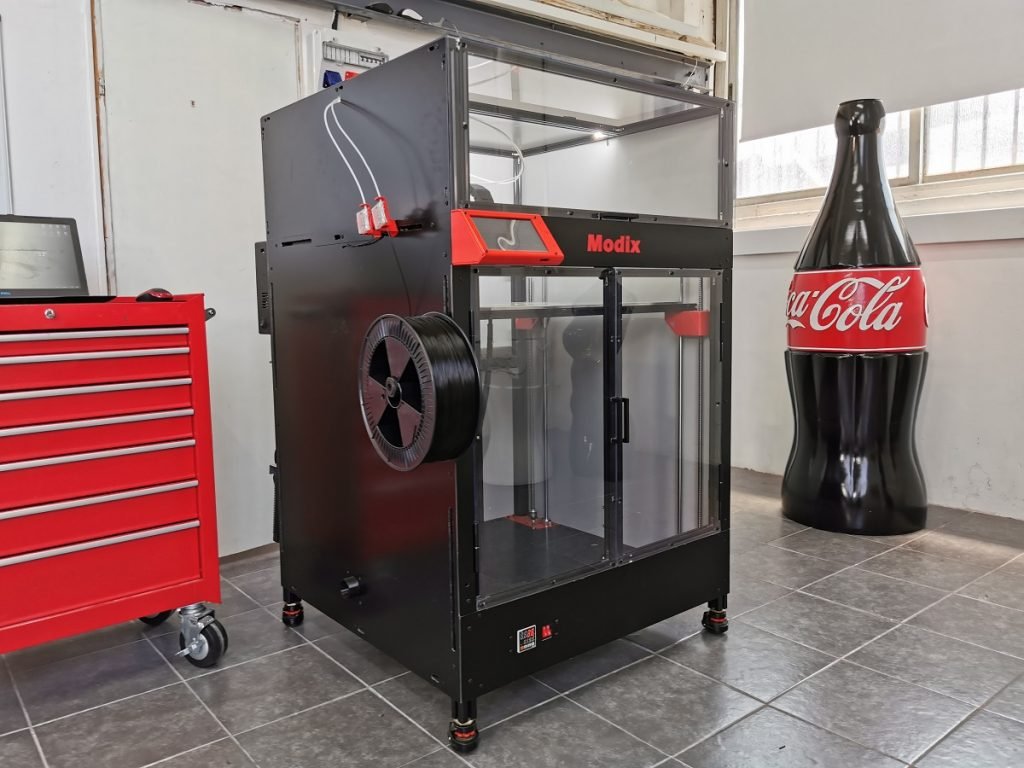IN-HOUSE VS OUTSOURCING. SHOULD I BUY A 3D PRINTER?
3D printing has changed the way products are designed, prototyped, and produced. Many companies face the challenge of whether to use in-house 3D printing or outsource to a specialist. This article is written to tell decision-makers about the advantages and disadvantages of owning 3D printing machinery vs outsourcing to a 3D printing service company. Both decisions have their pros and cons, and during this article, we’ll have a glance at each side of the story.
In-House | Owning 3D Printers
Having a 3D printer within the office can revolutionize your design process and you may even manufacture your parts. Owning a 3D printer will benefit your company in many ways. However, there are various drawbacks. After reading this section you’ll have a far better understanding of the implications that go alongside having your 3D printing department.

+ Pros
- The main advantage of having a desktop 3D printer within the office is validating product ideas and having a tangible product to debate together with your colleagues. Once you spend money on a 3D printer you’re investing your money in an asset that will provide your company with long-term benefits. It’ll provide you with a platform to check ideas and produce prototypes that will decide your future design decisions.
- Cost-effective
- Liberty to print
- Cons
- Irregular use may lead to loss
Owning a 3D printer is useful for many companies that are involved in product design and manufacturing (if they use it often), but investing in non-beneficiary resources will be a huge loss.
- Huge initial investment
The most obvious drawback is the initial investment to get and install the machinery. You’ll even have to add a hefty sum to keep a stock of fabric and maintain the machinery. Premium quality machines tend to be more reliable however they still require regular maintenance and deteriorate quickly if they’re not used properly. The subsequent procedure for printer usage and maintenance is extremely important if you expect the long life of your in-house printers.
- Extra space requirement
Another important consideration is the space requirements for your 3D printing machinery. Desktop 3D printers can sit comfortably in most office spaces and plug into the mains supply. The noise, air, and fire safety regulations are frequently neglected which may cause alarming incidents. High-quality prints require your machines to be left running for numerous hours which will cause a disturbance at your workplace.
- Unsuitable for the office environment
The post-processing of 3D prints is often simple but it won’t take time to be your worst nightmare as complex parts require extensive post-processing, which is typically not suitable in an office environment.
- Need of a skilled person
Operating the machine also will require some expertise. Differences in specifications occur with the material change. However, extensive knowledge of advanced settings is usually needed to change the axis otherwise it would result in a shortage of material.
Outsourcing | Use a 3D Printing Service
On the other side of the spectrum, you’ll find many 3D printing services. 3D printing bureaus that concentrate on utilizing additive manufacturing technology to supply high-quality prototypes also as end-use parts. Making an informed choice necessitates understanding your options, so we are getting to check out the advantages and disadvantages of working with a service like ours in this section.

+ Pros
- Expert service provided
When you use our 3D printing service, you’re quoted before proceeding with the order. You recognize exactly how much it’s costing you, which makes budgeting your project or billing your customer straightforward. Every order undergoes advanced inspection analysis by an expert before being manufactured. We communicate any potential issues with our customers to preemptively eliminate any errors.
- Leading edge technology service
3D printing services often have the foremost advanced 3D printers and premium quality materials available. This suggests that you can choose between a spread of various technologies and get your project done in a suitable component. With no initial investment cost, you’ll gain access to industrial 3D printing machinery that might never be viable to be used in an office environment.
- Rapid production
When it comes to rapid production it’s always better to choose an outsourcing 3D printing service company. Thousands of parts will be delivered within days, which might take months on one desktop printer.
- Well finished prototype
Finishing printed parts with professional equipment by skilled technicians means a better quality is assured when employing a service. A professional service provider like us is an expert in removing support material and is equipped to handle the dust and fumes created in post-processing.
- Cons
- Delayed prototype delivery
On working with a 3D printing service overtime is required to process, package, and deliver the order. The express delivery option can help, but that comes at an increased cost.
- Higher chances of errors due to miscommunication
Difficulty in communicating the exact requirements of the build to an outsourced 3D printing service company. However, mistakes can be avoided by asking for a technical drawing after explaining the model requirements.
- Lower visibility during the printing process
If problems in design are found midway during the printing process it would be easier to stop the build midway rather than at the time of receiving the finished part. Nonetheless, this could be avoided by ordering a miniature version of the 3D model first.
Conclusion
There are pros and cons to owning a 3D printer in-house and outsourcing to a 3D printing service. It’s an excellent asset to possess a 3D printer for your business because it will give your team access to fast prototypes.
However, alongside the initial investment, operating 3D printing machinery in-house requires suitable site requirements and skilled staff for operation, management, maintenance, and post-processing. Outsourcing to a 3D printing service is right for producing batches of parts or high-quality prototypes. You’ll need to wait (for the prototype), but that wait is usually compensated by the standard of the deliverable and therefore the range of technologies available. Printing in large volumes is usually faster with a 3D printing service.
Most importantly, the choice isn’t definitive. When combined, the two options are complimentary. If you own a printer in-house, your team is going to be experienced and design better quality models for 3D printing. You’ll still outsource to a printing service for specialist materials and quality prototypes.
